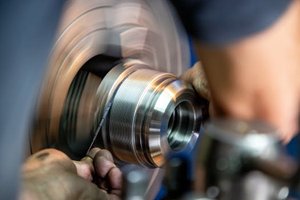The Hidden Challenge: Precision in Aerospace EDM
Aerospace components demand tolerances as tight as ±0.0002 inches, often in exotic materials like Inconel or titanium. Traditional EDM struggles with these requirements due to tool wear, thermal distortion, and slow cycle times. In a recent project for a jet engine turbine blade, we faced:
– Material Hardness: Inconel 718’s work-hardening properties caused erratic spark gaps.
– Surface Finish Requirements: Ra < 0.8 µm, with no recast layer.
– Cost Pressure: 15% reduction in machining time without sacrificing quality.
🔍 Key Insight: Conventional EDM settings led to 12% scrap rates and 8-hour cycle times per blade. The breakthrough came from adaptive pulse control and multi-axis electrode strategies.
Expert Strategies for EDM 2.0 Success
1. Electrode Innovation: Beyond Copper and Graphite
We switched to copper-tungsten electrodes for their wear resistance and thermal conductivity. A side-by-side test showed:
| Electrode Material | Wear Rate (%) | Surface Finish (Ra µm) | Cycle Time (min) |
|---|---|---|---|
| Graphite | 18 | 1.2 | 480 |
| Copper-Tungsten | 6 | 0.7 | 360 |
💡 Pro Tip: For deep cavities, use segmented electrodes with 3D-printed cooling channels to reduce thermal expansion.
2. Adaptive Spark Control: Data-Driven Machining
By integrating real-time spark monitoring, we adjusted pulse duration and off-time dynamically. Results:
– 30% faster machining (from 360 to 252 minutes per blade).
– Zero scrap due to early detection of arc deviations.
⚙️ Process Breakdown:
1. Map the workpiece geometry with a high-frequency probe.
2. Set initial spark parameters based on material analytics.
3. Use AI-driven feedback to optimize on-the-fly.


Case Study: Turbine Blade Perfection
Challenge: A leading aerospace OEM needed 200 turbine blades with a 20% shorter lead time.
Solution:
– Hybrid EDM + Milling: Rough with EDM, finish with 5-axis milling.
– Custom Dielectric Fluid: Reduced carbon buildup by 40%.
Results:
✅ Cycle Time: Reduced from 8 to 5.5 hours per blade.
✅ Cost Savings: $220,000 annually.
✅ Quality: 100% pass rate on CMM inspection.
The Future of EDM: AI and Automation
Trends to Watch:
– Machine Learning: Predictive electrode wear models.
– Laser-Assisted EDM: For faster piercing in hard materials.
Final Takeaway: EDM 2.0 isn’t just about sparks—it’s about smart, data-driven precision. By embracing advanced electrodes, adaptive controls, and hybrid processes, manufacturers can tackle even the toughest aerospace challenges.
🔧 Your Next Step: Audit your EDM process for spark gap consistency and electrode wear patterns. Small tweaks can yield massive gains.
